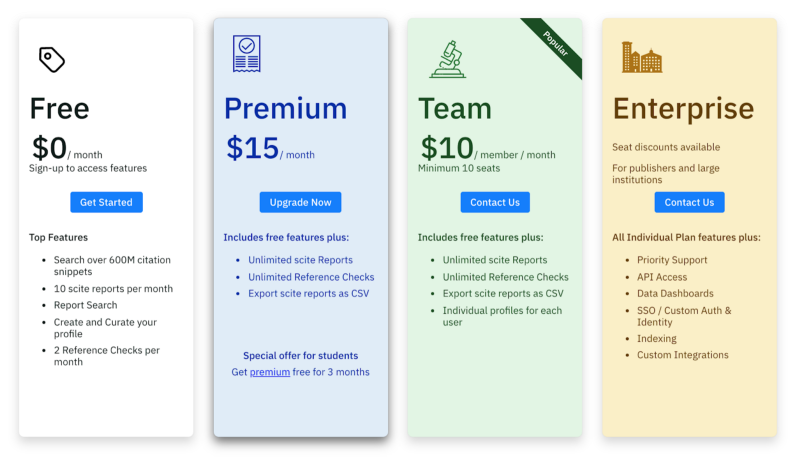The scite business model
Tue Aug 25 2020scite is a small but ambitious startup that aims to make science more reliable and efficient by helping researchers better discover and evaluate research through Smart Citations. These citations help users to see how subsequent research cites an article of interest by presenting the citation context, citation location, and citation type, effectively helping users see how a scientific article has been cited, not just how many times.
The idea behind scite began as a simple academic paper proposing a potential solution to the reproducibility crisis. After years of tinkering and testing, we developed a prototype demonstrating the feasibility and usefulness of the idea. With the belief that scite should be a real resource that could help the research community for years to come, not just a side project or proof of principle, a company was formed. Since then scite has been fortunate enough to have been awarded major grants from the National Institutes of Health and the National Science Foundation and to have attracted investment from private organizations and individuals. This has been necessary as the scale of the problem–analyzing all of the scientific literature– is massive, with hundreds of thousands of dollars in computational costs already. Since day one we have known that in order to be a sustainable resource we must build a sustainable business, and that means having a business model. But how can we make it so that scite is open to the people it helps, the researchers, students, the public, and anyone that cares about scientific literature while making money to support the team and further development of the platform? Today, we are excited to share with you a high-level overview of our answer to that question.
Individuals, groups, and organizations
We believe that scite should be open so that it can be freely used by most while allowing us to sustain ourselves. To achieve this, we recently introduced a freemium pricing model, which allows users occasionally using scite to continue using it for free, charging only once we have proven our value. This means that we are limiting the number of reports a user can see per month, Reference Checks they can run, and visualizations they can explore (coming soon!), unless they upgrade to our Premium tier. If you are getting value out of scite we encourage you to upgrade if you can to help support us. If you’re at a larger organization, you can ask your institution to purchase an enterprise plan!

If the premium tier still proves to be too costly, we offer 3-months of Premium features to students for free and have built a referral system that will allow users to refer their colleagues to the site in exchange for a free month of the premium plan, something they can continue to do each month.
In addition to the freemium plans outlined above, we also charge for more custom solutions specific to academic publishing, libraries, universities, and private R&D organizations. Our Reference Check, which was designed to help users and publishers ensure the reliability of their references, is currently being integrated into various submission systems and will be free for 10% of a publisher’s submission volume but come with a cost after that threshold, an approach similar to plagiarism detection tools that comes with a similar price. Additionally, accessing our data for more detailed analyses that can help publishers, librarians, pharmaceutical companies, and others better understand articles, journals, and authors will be a premium feature on scite that we will charge for, specifically accessing more detailed information on our dashboards or using our API for commercial purposes.
Like everything at a startup, this is a first iteration, something that we will continue to improve upon based on feedback from you. So, please let us know what you think about our plans, how we could improve the service, or what additional features we could include to make the product more useful to you. You can contact us at hi@scite.ai, we’ll actually listen!

